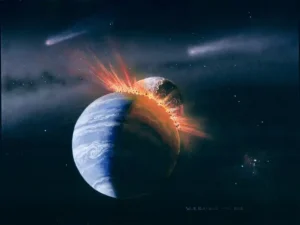
Fresh Insights into Lunar Formation
The study, published in the Proceedings of the National Academy of Sciences, examined oxygen isotopes from 14 lunar samples and 191 terrestrial measurements using laser fluorination. The results showed a striking isotopic similarity between oxygen-17 isotopes found in both the Moon and Earth. This contradicts previous theories suggesting that Theia, the protoplanet believed to have collided with Earth billions of years ago, played a major role in shaping the Moon’s composition.
Professor Andreas Pack, Managing Director of the Geoscience Centre at the University of Göttingen, explained to Phys.org that Theia may have undergone earlier collisions that stripped away its mantle. As a result, by the time it impacted Earth, it may have behaved like a “metallic cannonball,” leading to the formation of the Moon from Earth’s ejected mantle material.
New Perspectives on Earth’s Water Origins
The research also offers fresh perspectives on how Earth acquired its water. The widely accepted Late Veneer Event theory, which suggests that water arrived after the Moon’s formation through later impacts, is now being questioned. First author Meike Fischer, formerly at MPS, stated that the isotopic consistency between Earth and the Moon eliminates many types of meteorites as potential sources of water. Instead, enstatite chondrites—meteorites with isotopic similarities to Earth and a sufficient water content—are now considered the most likely contributors.
These findings provide crucial insights into the interconnected histories of Earth and the Moon, deepening our understanding of planetary evolution.
